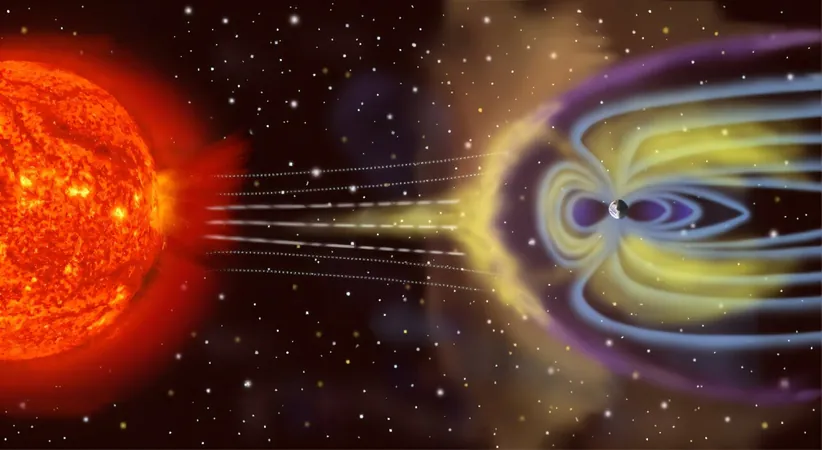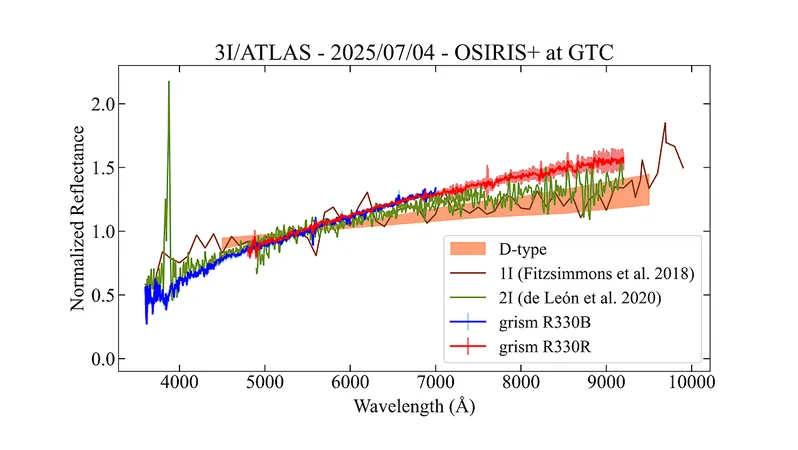
A Game-Changer in Space Weather Prediction: How Solar Sails Could Shield Earth from Cosmic Threats
2025-07-14
Author: John Tan
The Rising Threat of Space Weather to Earth's Technology
In an age where our reliance on technology is ever-growing, from electric grids to telecommunications, there’s an unseen enemy looming in the cosmos: space weather. This includes solar phenomena that directly impact our planet's systems and infrastructure.
Understanding Space Weather
Space weather refers to fluctuations in the environment between the Sun and Earth. A prominent example is the interplanetary coronal mass ejection (CME), a powerful burst of solar wind and magnetic fields that can travel at staggering speeds of up to 1,242 miles per second (2,000 km/s). While these events may create stunning auroras, they can also wreak havoc— disrupting satellites, crippling electric grids, and exposing astronauts on future Moon and Mars missions to dangerous levels of radiation.
A Groundbreaking Initiative: SWIFT
Leading the charge in combating these threats is a team of heliophysicists developing a next-generation satellite system known as SWIFT (Space Weather Investigation Frontier). The mission? To provide earlier and more accurate predictions of severe space weather events that could have devastating consequences.
The High Stakes of Space Weather
With commercial space activities booming and military operations heavily relying on satellites for communication, navigation, and surveillance, the implications of space weather are more critical than ever. Current estimates suggest that these celestial phenomena jeopardize up to $2.7 trillion in global assets.
Take the infamous Carrington Event of 1859, for example, a solar storm that ignited fires in telegraph stations across North America and Europe. More recently, in February 2022, SpaceX lost 39 of its 49 newly launched Starlink satellites due to a moderate space weather event. These incidents highlight the pressing need for improved forecasting systems.
Current Space Weather Monitoring Systems
Presently, space weather services depend on satellites that monitor the solar wind, providing valuable insights into how our planet reacts to cosmic changes. Located mostly within Earth’s protective magnetic shield, these satellites can predict space weather with a warning time of up to 40 minutes, primarily from positions around the L1 Lagrange point.
Extending the Warning Horizon
Imagine having the ability to forecast space weather events with a warning time greater than 40 minutes. This would allow satellite operators to adjust their satellite positions and operational parameters, and airlines could reroute flights to protect passengers from radiation exposure. Even avid aurora chasers would benefit from extra time to get to optimal viewing locations.
Introducing Solar Sails for Advanced Predictions
This is where SWIFT comes into play. For the first time, this new satellite constellation aims to position a space weather monitor beyond the L1 point, at an astounding 1.3 million miles (2.1 million km) from Earth, providing up to 60 minutes of advance warning.
The innovative aspect of SWIFT is its use of solar sails to maintain orbit. Unlike traditional propulsion systems that require constant fuel consumption, solar sails utilize the momentum from sunlight to propel spacecraft, dramatically increasing their operational lifespan.
Breaking New Ground With Solar Cruiser
Launching as early as 2029, the Solar Cruiser demonstration mission will feature an enormous solar sail, spanning 17,793 square feet (1,653 square meters). Successfully deploying this sail in space will be pivotal for the SWIFT constellation's success.
A Collective Effort to Safeguard Our Future
Ultimately, as our dependency on space technology continues to grow, investing in advanced space weather prediction methods like SWIFT will be crucial in shielding both our aerospace and terrestrial infrastructure from cosmic dangers. With a forward-thinking approach, we can ensure a safer, more reliable future filled with technological advancements.



 Brasil (PT)
Brasil (PT)
 Canada (EN)
Canada (EN)
 Chile (ES)
Chile (ES)
 Česko (CS)
Česko (CS)
 대한민국 (KO)
대한민국 (KO)
 España (ES)
España (ES)
 France (FR)
France (FR)
 Hong Kong (EN)
Hong Kong (EN)
 Italia (IT)
Italia (IT)
 日本 (JA)
日本 (JA)
 Magyarország (HU)
Magyarország (HU)
 Norge (NO)
Norge (NO)
 Polska (PL)
Polska (PL)
 Schweiz (DE)
Schweiz (DE)
 Singapore (EN)
Singapore (EN)
 Sverige (SV)
Sverige (SV)
 Suomi (FI)
Suomi (FI)
 Türkiye (TR)
Türkiye (TR)
 الإمارات العربية المتحدة (AR)
الإمارات العربية المتحدة (AR)